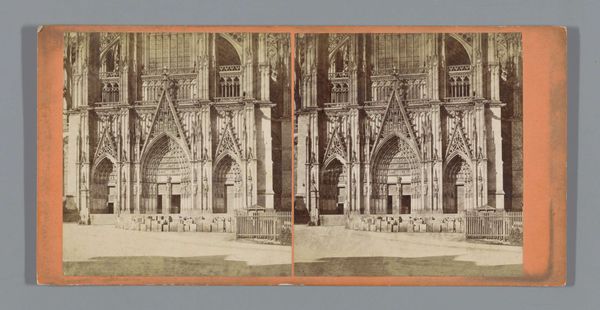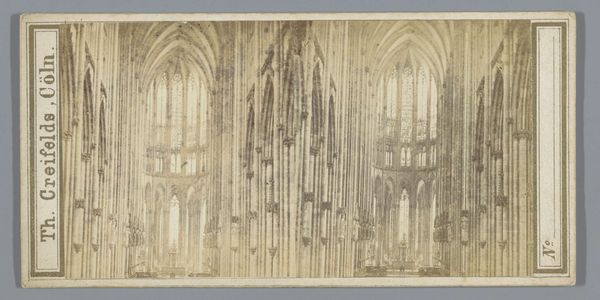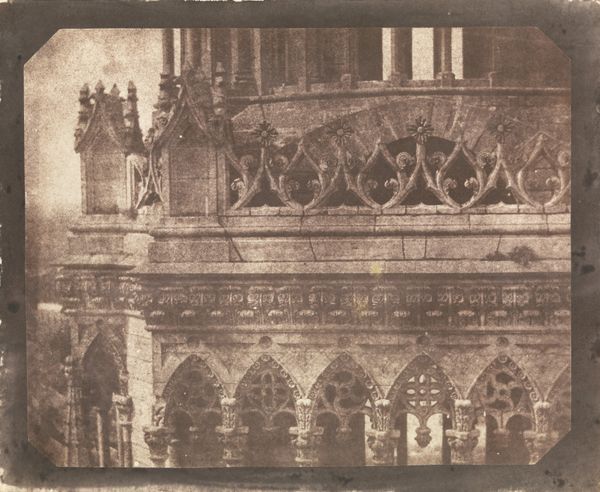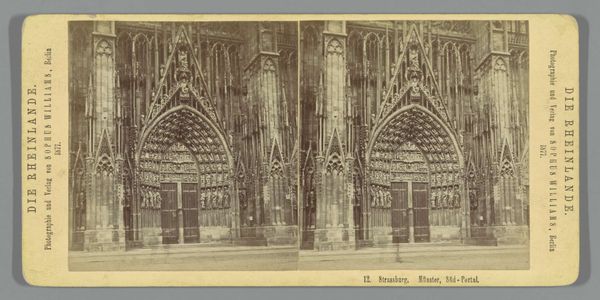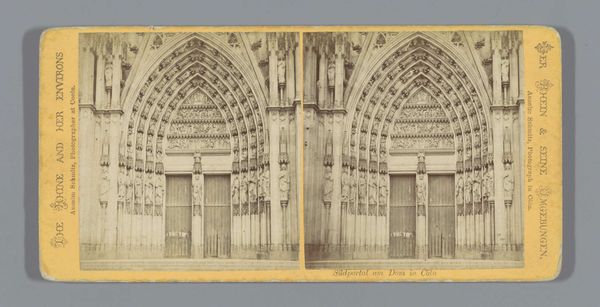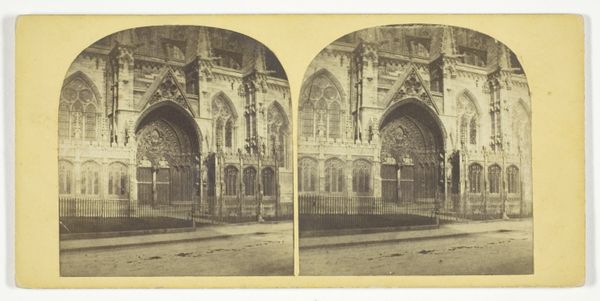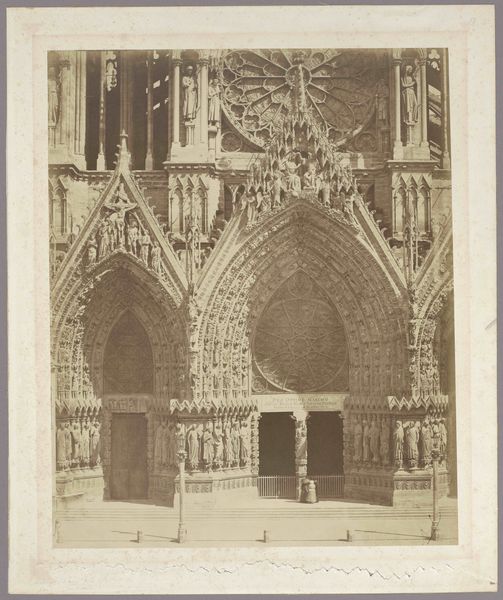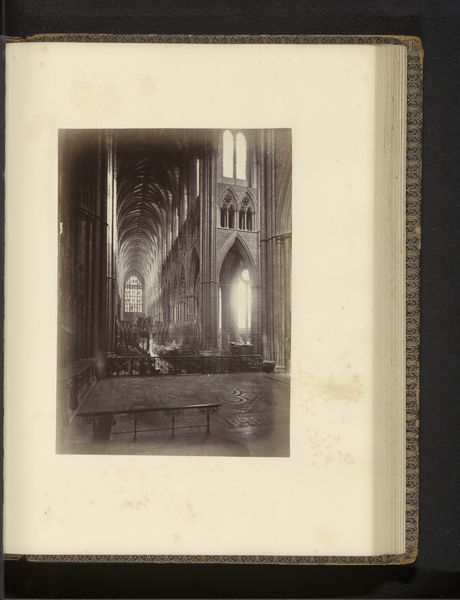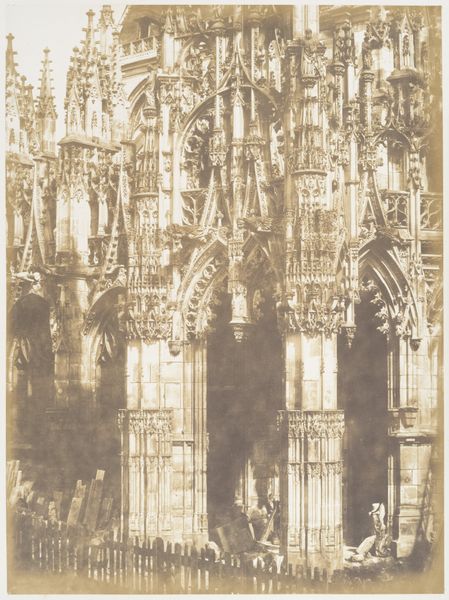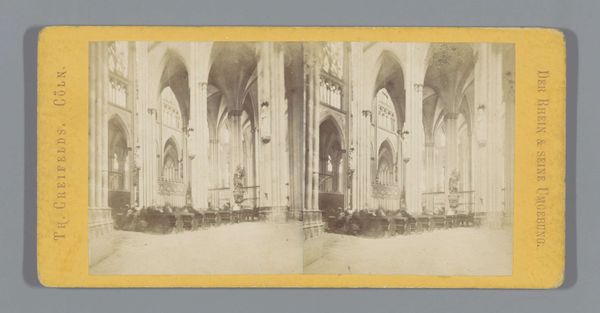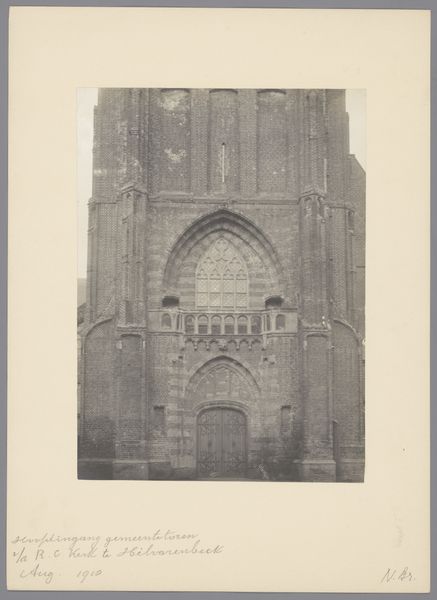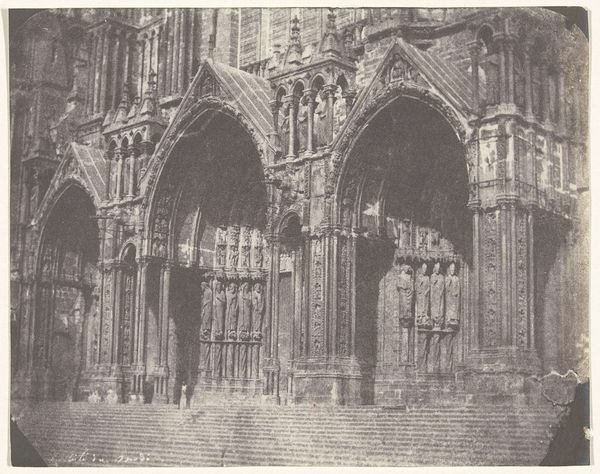
Dimensions: height 127 mm, width 162 mm, thickness 0.14 mm
Copyright: Rijks Museum: Open Domain
Editor: Here we have Charles Nègre's "Portal on the south side of the Cathedral of Chartres," created in 1854. As a photographic contact print, it’s just so different from the typical paintings we often discuss. The sepia tones give it an almost dreamlike quality. What stands out to you most about this image? Curator: Well, the image immediately places us in the context of 19th-century France, a period intensely interested in documenting its historical and cultural patrimony. Photography was crucial, especially for architecture. Nègre’s choice of Chartres Cathedral speaks volumes; it was an enduring symbol of religious authority, craftsmanship, and national pride. Consider how this image might function to create a shared French identity at a time of rapid social and political change. Editor: So, beyond just documentation, you’re saying the photograph actively participates in building a cultural narrative? Curator: Exactly. Nègre wasn’t simply capturing the cathedral, but he was shaping its public image. He was making choices – framing, exposure, the angle – all designed to convey specific ideas about French heritage. Ask yourself, who was the audience for this image? How would they interpret its scale, its grandeur, in relation to their own lives and beliefs? Also note how photography democratized image-making. No longer exclusively in the domain of painting. Editor: That's fascinating! I hadn't considered how photography contributed to a broader discussion about national identity. Curator: And notice the technical qualities for the period. The detail, the gradations of tone. How do you see these new capabilities shifting what images were _for_ at the time? Editor: It’s clear the level of realism attainable through the lens offers a powerful claim to truth. I definitely have a better understanding of how photography can serve ideological purposes. Thanks for illuminating this. Curator: And I find myself thinking about the power dynamics implicit in photographing such an imposing religious structure. Did this new media of photography amplify its significance or subtly democratize it through wider access to the image?
Comments
No comments
Be the first to comment and join the conversation on the ultimate creative platform.
